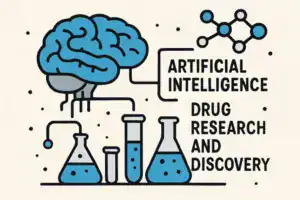With the surge of the popularity of Airbnb, we have seen more and more hosts opening up their homes to guests. Be aware that there are some safety risks with this type of service. In this article, we provide you with some tips to make your stay as comfortable and stress-free as possible!

1. Ask questions before accepting a booking:
Get to know your guests by asking them questions about their trip and what they are looking for in a place to stay. This will help you determine if they are a good fit for your property and if you will be able to provide them with a safe and enjoyable experience.
2. Inspect your property regularly:
Make sure to check your property regularly for any potential safety hazards. This includes checking for trip hazards, making sure all electrical outlets are properly covered, and ensuring that there is no loose debris or other objects that could pose a risk to guests. For instance, if you check out for upscale Miami mansion rentals you will understand they have a proper system of booking and inspection.
3. Provide clear instructions for use of amenities:
If your property has any special amenities or features, be sure to provide clear instructions on how to use them safely. This includes things like hot tubs, pools, fireplaces, and any other potentially dangerous areas or items on the premises.
Join a community or Airbnb course like 10xbnb to learn from others.
4. Keep emergency contact information readily available:
In case of an emergency, it is important that you have easy access to emergency contact information for your guests. This should include numbers for local law enforcement, fire department, and medical services. You may also want to include your own contact information in case guests need to reach you directly.
Require references, ID and credit card info:
When you list your space on Airbnb, you’ll need to require that your guests provide references, ID, and credit card info. This is for your safety and protection, as well as theirs.
By requiring this information from your guests, you can help ensure that they are who they say they are and that they will be able to pay for their stay. You can also use this information to run a background check if you feel it is necessary.
Asking for references is a good way to screen guests and make sure they will be respectful of your property. You can ask for references from previous landlords or employers, or you can require that your guests provide character references from people who know them well.
ID should be required in order to confirm the identity of your guests. A driver’s license or passport should suffice. Credit card info should also be required in order to confirm that your guests have the means to pay for their stay.
Get the address before agreeing to rent:
When you’re looking for a place to stay on Airbnb, it’s important to make sure you get the address before agreeing to rent. This will ensure that you’re not staying in a dangerous or unsafe area. You can use sites like Google Maps or Street View to get a good idea of what the area looks like and if it’s safe. If you have any doubts, you can always ask the host for more information about the area.
Find out how long the guest will be staying
When you’re first getting to know a potential Airbnb guest, one of your top priorities should be finding out how long they plan on staying. This will help you determine what kind of security measures you need to take and how much interaction you’ll have with the guest.
There are a few different ways to find out this information. The first is to simply ask the guest directly. You can do this when you’re messaging back and forth to arrange the stay. Most guests will be happy to tell you how long they’ll be in town for.
Another way to find out is to look at the guest’s profile. If they have their dates of travel listed, you’ll be able to see how long they’ll be in town for. Additionally, many guests will mention in their profile description how long they’re looking to stay.
Finally, you can always check with the Airbnb site itself. Once a booking is confirmed, there will be a section that lists the dates of the stay. This is a great way to double-check any information that the guest has given you.
Find out when they are arriving and departing
If you’re hosting guests in your home through Airbnb, it’s important to be aware of their arrival and departure times. This will help you plan for their stay and make sure that everything goes smoothly.
It’s a good idea to communicate with your guests before they arrive to confirm their arrival time. This way, you can be sure that someone will be there to greet them when they arrive. If you’re not going to be around when they arrive, make arrangements for someone else to let them in and give them a tour of the house.
When your guests are ready to leave, it’s important to be available to say goodbye and thank them for staying with you. Make sure you know their departure time so that you can be there to see them off.
Read reviews of the guest and their previous stays
When you’re considering whether or not to rent out your home on Airbnb, one of the first things you should do is read reviews of guests who have stayed in similar properties. This will give you a good sense of what to expect in terms of guest behavior and will help you spot any potential red flags.
In addition to reading reviews, it’s also a good idea to check out the profile of each prospective guest. Take a look at their photos and see if they appear to be respectful and considerate. Also, take note of their travel history and see if they’ve had any negative experiences with Airbnb in the past.
By taking the time to screen guests carefully, you can help ensure that your rental experience is positive for both you and your guests.
Take photos as soon as they arrive and as they depart
As an Airbnb host, it is your responsibility to ensure the safety of your guests. One way to do this is to take photos of your property as soon as guests arrive and as they depart. This will help you keep track of any damage that may occur during their stay.
It is also a good idea to take photos of any valuables that you leave out for your guests. This way, if anything goes missing, you will have a record of what was there. Finally, be sure to ask your guests to leave a review after their stay so that you can improve your listing for future visitors.
Contact the police if you suspect anything suspicious
If you believe that someone is staying in your Airbnb rental who shouldn’t be, or if you suspect any other suspicious activity, you should contact the police right away. It’s better to be safe than sorry, and the police will be able to investigate the situation and take appropriate action.










